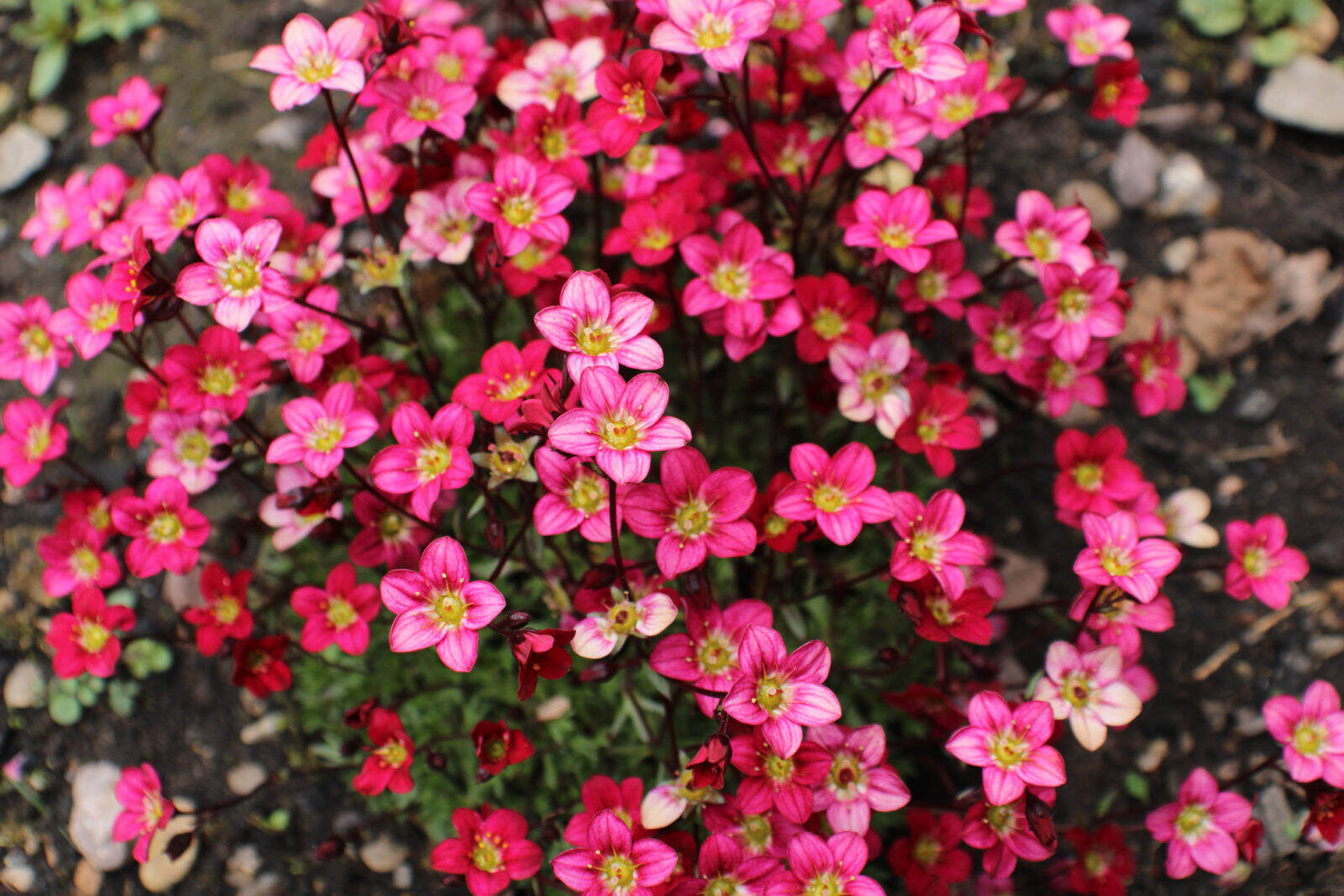
Saxifraga, also known as rockfoil, is a fascinating plant genus with a rich history and unique characteristics. Found in various climates, from alpine regions to temperate zones, these resilient plants have adapted to thrive in harsh conditions. Did you know that some species can even grow on bare rock surfaces? This ability has earned them the nickname "rock breakers." With over 400 species, Saxifraga showcases a stunning variety of forms and colors, making them popular among gardeners and botanists alike. Whether you're a plant enthusiast or just curious about nature's wonders, Saxifraga offers a captivating glimpse into the world of hardy, beautiful flora.
What is Saxifraga?
Saxifraga, also known as saxifrage, is a genus of flowering plants with over 400 species. These plants are known for their ability to thrive in rocky, alpine environments. Let's dive into some fascinating facts about this resilient plant.
-
Saxifraga comes from the Latin words "saxum" (rock) and "frangere" (to break), meaning "rock breaker."
-
These plants are often found in mountainous regions, growing in crevices and rocky outcrops.
-
Saxifraga species are known for their beautiful, delicate flowers that come in various colors, including white, pink, and yellow.
-
Many saxifrage plants have rosettes of leaves that form dense, cushion-like mats.
-
These plants are highly adaptable and can survive in harsh conditions, including poor soil and extreme temperatures.
Saxifraga's Unique Adaptations
Saxifraga plants have developed several unique adaptations that allow them to thrive in challenging environments. Here are some interesting facts about their survival strategies.
-
Some species have thick, fleshy leaves that store water, helping them survive in dry conditions.
-
Saxifraga plants often have hairy or waxy leaves that reduce water loss and protect them from the cold.
-
Many species produce a sticky substance on their leaves that helps trap insects, providing additional nutrients.
-
Some saxifrage plants have deep root systems that anchor them to rocky surfaces and help them access water.
-
These plants can reproduce both sexually (through seeds) and asexually (through runners or offsets).
Saxifraga in History and Culture
Saxifraga has played a role in various cultures and historical contexts. Here are some intriguing facts about its cultural significance.
-
In ancient times, saxifrage was believed to have medicinal properties and was used to treat various ailments.
-
The plant's name, "rock breaker," led to the belief that it could dissolve kidney stones.
-
Saxifraga has been featured in traditional European herbal medicine for centuries.
-
In some cultures, saxifrage is considered a symbol of resilience and endurance.
-
The plant has inspired various works of art and literature, often representing strength and beauty in adversity.
Saxifraga in Gardening
Saxifraga is a popular choice for gardeners, especially those interested in rock gardens and alpine plants. Here are some facts about growing and caring for saxifrage.
-
Saxifraga plants prefer well-drained soil and can tolerate poor, rocky conditions.
-
These plants thrive in full sun to partial shade, depending on the species.
-
Saxifraga is relatively low-maintenance and requires minimal watering once established.
-
Many species are hardy and can withstand cold temperatures, making them suitable for various climates.
-
Saxifraga can be propagated through seeds, cuttings, or division, making it easy to share with fellow gardeners.
Interesting Saxifraga Species
With over 400 species, there are many unique and interesting saxifrage plants to explore. Here are some notable examples.
-
Saxifraga oppositifolia, also known as purple saxifrage, is one of the earliest blooming alpine plants, often flowering while snow is still on the ground.
-
Saxifraga stolonifera, commonly known as strawberry begonia, is a popular houseplant with attractive, variegated leaves.
-
Saxifraga paniculata, or encrusted saxifrage, has striking, silver-edged leaves and produces clusters of white flowers.
-
Saxifraga cotyledon, also known as pyramid saxifrage, has tall flower spikes and is often used in rock gardens.
-
Saxifraga umbrosa, commonly called London pride, is a hardy ground cover with pink or white flowers.
Saxifraga's Role in the Ecosystem
Saxifraga plants play an important role in their natural habitats. Here are some facts about their ecological significance.
-
These plants help prevent soil erosion by stabilizing rocky slopes with their root systems.
-
Saxifraga provides food and habitat for various insects and small animals, contributing to biodiversity in alpine environments.
The Final Note on Saxifraga
Saxifraga, with its diverse species and unique adaptations, truly stands out in the plant world. These hardy plants thrive in some of the most challenging environments, from rocky crevices to alpine meadows. Their beautiful blooms and varied foliage make them a favorite among gardeners and botanists alike. Whether you're a seasoned gardener or just starting out, adding Saxifraga to your collection can bring a touch of nature's resilience and beauty to your space. Remember, these plants are not just about looks; they play a crucial role in their ecosystems, supporting biodiversity and soil health. So next time you see a Saxifraga, take a moment to appreciate its tenacity and charm. Happy gardening!
Was this page helpful?
Our commitment to delivering trustworthy and engaging content is at the heart of what we do. Each fact on our site is contributed by real users like you, bringing a wealth of diverse insights and information. To ensure the highest standards of accuracy and reliability, our dedicated editors meticulously review each submission. This process guarantees that the facts we share are not only fascinating but also credible. Trust in our commitment to quality and authenticity as you explore and learn with us.
